
Astrakhan Host Cavalry
The vast majority of the Astrakhan Host had been, and it seems always remained, cavalry.
1st and 2nd Astrakhan Cossack Regiments
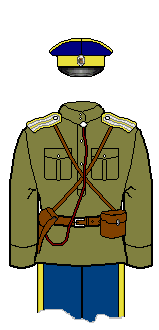 |
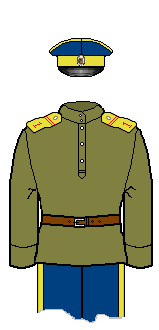 |
 |
|---|---|---|
| Officer | Sergeant | Papakhi, men and officers |
The colour of the Astrakhan Host was yellow.
Uniform Details
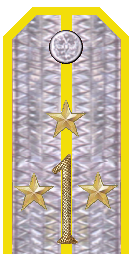 |
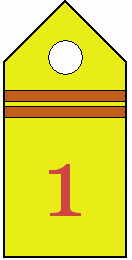 |
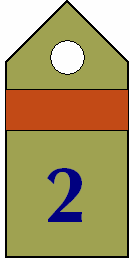 |
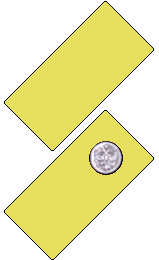 |
| Shoulderboards: Lieutenant | Shoulderboards: Sergeant | Shoulderboards: Sergeant-Major | Greatcoat tabs |
The shoulderboards were yellow, with red markings. Khaki ones had the cipher in dark blue. Officer buttons and lace were silver, so rank markings and cipher were gold.
The Astrakhan units seem to only have a number for their cipher, as they were the senior of the four hosts with yellow as their colour (the Amur Host had the A). Potentially this would have led to the khaki side looking like plenty of other units, but in the Civil War they may have stuck with the yellow side anyway.
History in the RCW
These regiments descended from the men of the fighting with the Don forces in 1918. On paper there were four Astrakhan Cossack Cavalry regiments, but it seems that only the 1st and 2nd were of much fighting value. It appears the 2nd was almost entirely Kalmyk.
When the Don joined the AFSR the Astrakhan Army was disbanded, and the Astrakhan Cossacks put into the Astrakhan Detached Cavalry Brigade, composed of the Astrakhan Cossack Regiment, the Astrakhan Combined Cavalry Regiment (the name suggests still largely Kalmyk) and the 1st Astrakhan Cossack Horse Battery. There was a 1st Circassian Regiment attached as well. They fought in the Manych area in mid-1919, were roughly handled by Dumenko's Cavalry and sent to the rear to regroup.
They returned as a division: 1st and 2nd Astrakhan Cossack Regiments, 1st and 2nd Astrakhan-Kalmyk-Manych Regiments, a Mixed-ethnic Regiment and two batteries. This division assisted Wrangel as he conquered Tsaritsyn and the was part of the force that attacked towards Cherniy Yar afterwards.
It added some other units from time to time, such as briefly having the 100-odd sabres of the 2nd Pavlogradskiy Hussar Regiment. The 3rd Regiment also spent some time detached from the division. It seems that more Cossacks flowed in and its numbers in October 1919 were:
1st Astrakhan Cossack Regiment – 546 sabres, 8 MGs
2nd Astrakhan Cossack Regiment – 151 sabres, 6 MGs
3rd Astrakhan Cossack Regiment – 425 sabres, 12 MGs
4th Astrakhan Cossack Regiment – 377 sabres, 11 MGs
1st Inorodski Horse Regiment – 97 sabres, 3 MGs (inorod = non-Cossack)
4th Horse Artillery Divizion – Col.Petrovskiy
1st Astrakhan Cossack Battery – 4 light cannon
9th Horse Battery – 5 light cannons
The MGs in the cavalry units will likely be tachankas from mid 1919 at least (the first reference I could find for certain of them).
They fell back into the Caucasus, and were shipped to the Crimea in April 1920. The remaining men were reorganised into the 1st and 2nd Astrakhan Cossack Regiments, and placed in the combined Terek-Astrakhan Cavalry Brigade. They took part in the Kuban landing and then in the Crimean breakout.
It seems that for October 1919, the 1st Regiment was 600 sabres and 20MGs, but that the 2nd Regiment was in the rear fighting partisans because it had been worn out in the fighting. The sources also mention an additional divizion of Astrakhan Cossacks, but it is unclear exactly what they represent.
Flags
The official HQ flags of the staff of the 1st and 2nd Regiments under the Imperial system were a simple red 1 and 2 on a yellow square.

The regimental commander would have been accompanied by a diamond flag, red inside blue, with the cipher in black. That was fine under the old system where Cossacks didn't fight alongside each other so much, but in the Caucasian Army it would have left every unit looking identical. Likely some other version was used by most units. I went with this version for my unit.

Squadrons carried flags on the standard Cossack model, with Host colour above and Sotnia colour below:

Other Similar Units
There were also a couple of unattached Astrakhan Cossack Sotnias in the AFSR in 1919, not part of the Astrakhan Cossack Division.
The Astrakhan cavalry units with the Urals Host are described here.
Astrakhan Cossacks are largely identical to Trans-Baikal Cossacks and the Don Kalmyk Regiment, except for flags and shoulderboard ciphers.